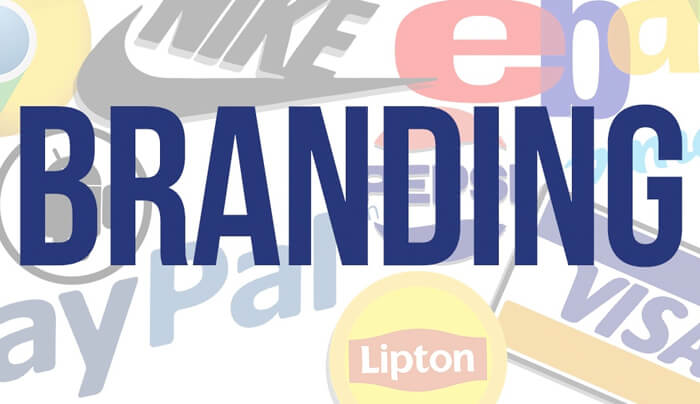
How do I create a social media content strategy? If you’re asking this question, then you’ve officially entered the new era of the marketing world. Welcome.
Back to your question. How do you create a social media content strategy? Well first things first, you have to understand what it means. Content strategy is just like it sounds—a strategy.
It’s coming up with the plan of action to successfully promote your product or service by creating value for the specific audience you believe will buy your product. It’s how you’re going to bring qualified customers to you instead of vying for anyone and everyone’s attention in hopes somebody buys your product.
Having an effective content strategy is the most valuable aspect of your marketing efforts because it keeps you organized and on course with your content from creation, to distribution, to management, to final analysis. In the long run, it’s what’s going to save you time, money, and creative effort while attracting the people who want your product.
Get it? Got it? Good.
It takes a well-planned and thought-out approach to craft content your customers and prospects will love and find meaningful. But creating a strategy can be a nightmare if you don’t know what you’re doing
So without further ado,
Here are 5 tips for creating an effective Social Media content strategy:
1. Know your audience.
Knowing your audience is the most crucial part of your strategic planning process. If you screw it up you have to start all over again.
You can’t create an effective content strategy if you don’t know whom you’re creating it for. So what do you?
Identify who your ideal buyer is. You want to know who they are and what makes them tick.
Ask yourself these questions to get a better idea of whom you’re dealing with:
- Who needs or can benefit from my product or service?
- How old are they? Are they male or female? Single? Married? Do they have a family?
- What’s their job title?
- How do they go about making a purchase decision? Do they do research? How do they do their research?
- What terms would they use to search for my product/service?
- What problems do they have surrounding my product or service and how can I provide the answer?
These questions might seem rather odd or irrelevant to you, but I promise they’re worth answering.
When you have the answers to these questions, you’ll have a better understanding of how your buyer thinks, acts, and makes buying decisions. Write them down so you don’t forget, or if you’re feeling really creative, write up a short story about your ideal buyer and include those characteristics. It’ll help you visualize the person better.
Your audience affects every aspect of the strategic planning process because everything you do and plan for is meant for them. So knowing who they are, how old they are, their interests, etc., helps you know how they think and act and ultimately where, when, and how will be the best way for them to engage with your content.
2. Differentiate your brand.
What makes your particular product unique and stand out from the competition? What sets you apart and creates value for your customers?
Maybe you have it nailed down already. Maybe you’re not quite sure what makes you unique. Take a look at a few top brands to understand what makes them stand out from the competition. Knowing what aspects make them stand out will help you identify your unique value.
Take Nike as an example. What differentiates Nike from Adidas and Under Armor that creates value for its customers? Just read their mission statement:
“To bring inspiration and innovation to every athlete in the world.”
Nike combines innovation with high quality sportswear and Bill Bowerman’s belief that “if you have a body, you are an athlete,” essentially creating value in two ways:
- Their innovative products far outreach their competitors’.
- Their boosting confidence into even the shyest and least active people by letting them know they are athletes, too.
Creating in content a unique brand value and voice gives your customers a reason to buy your product over other products. When you have hold of your unique brand value live it, breathe it, and be it. Then convey that value in the message of your content.
3. Be where your audience is.
Where is your ideal customer likely to engage with your content? Think about the different social platforms they’re likely to be on.
A younger demographic like teenagers, college students, and other young millennials, commonly known as the later half of Generation Y and Generation Z, are likely to be on Facebook, Twitter, Instagram, Snapchat, etc. If you name an entertaining social platform that comes as an app for their smartphone, they’re probably on it.
On the other hand, the older generations comprised mainly of the middle-aged and the elderly, i.e. our parents and grandparents, are less likely to be on every platform.
Knowing who your audience is as well as the more personal details about them will help you gain a better idea of where to share your content.
4. Optimize content by platform.
The type of content you create depends on which social platform(s) your audience engages with. Blog posts, pictures, videos, podcasts, ebooks, infographics, how-to guides…the list goes on, but which one will you use?
Facebook is a great place for sharing virtually all types of content because you have the ability to share links to blogs, videos, podcasts, pictures, etc. It’s the place where you can really delve into the “Say something…” or “What’s on your mind…” part of the post to explain your thoughts on that piece of content.
Twitter, on the other hand, is limited to 140 characters so although content type is unlimited, you are limited on what you can say about it. Be concise, be witty, and don’t overuse hashtags.
Other platforms are limited to the types of content you can use like Instagram, YouTube, Snapchat and more. They’re pretty self explanatory. Which ever you choose, get a feel for what’s being shared and understand what works and what doesn’t. Be creative and have fun with it.
These are a few great articles I found super helpful for optimizing by platform:
- How to Write Good Instagram Captions: 8 Tips for Perfecting Your Copy
- 7 Tips For Building Your YouTube Channel
- How to Optimize Your Tweets for Search
- Anatomy of a Perfect Facebook Post: Exactly What to Get Better Results
5. Engage your audience.
Planning content is only part of the content strategy. You can’t create content, push it out, and hope it sticks. You have to engage your audience both within your content and one-on-one.
People like to interact with other people. It’s what makes us human. So why not interact with your followers? Answer comments on your posts. Pose thought provoking questions on social media and encourage your followers to answer or share their own questions. Interact via live video and encourage comments in the comment section to be mentioned or answered in your video.
Use bold lettering and color that’s pleasing to the eyes. Make relevant, bulleted or numbered lists of tips, tricks, etc. Skillfully place stunning images or humorous GIFs that go along with the topic of your content.
Whatever you do, be human. Be thoughtful. Engage your audience.
Always remember that content strategies aren’t perfect. Tweaking is a must as audience’s interests change. Stay up-to-date on demographic and technological trends and apply what works to your strategy.


